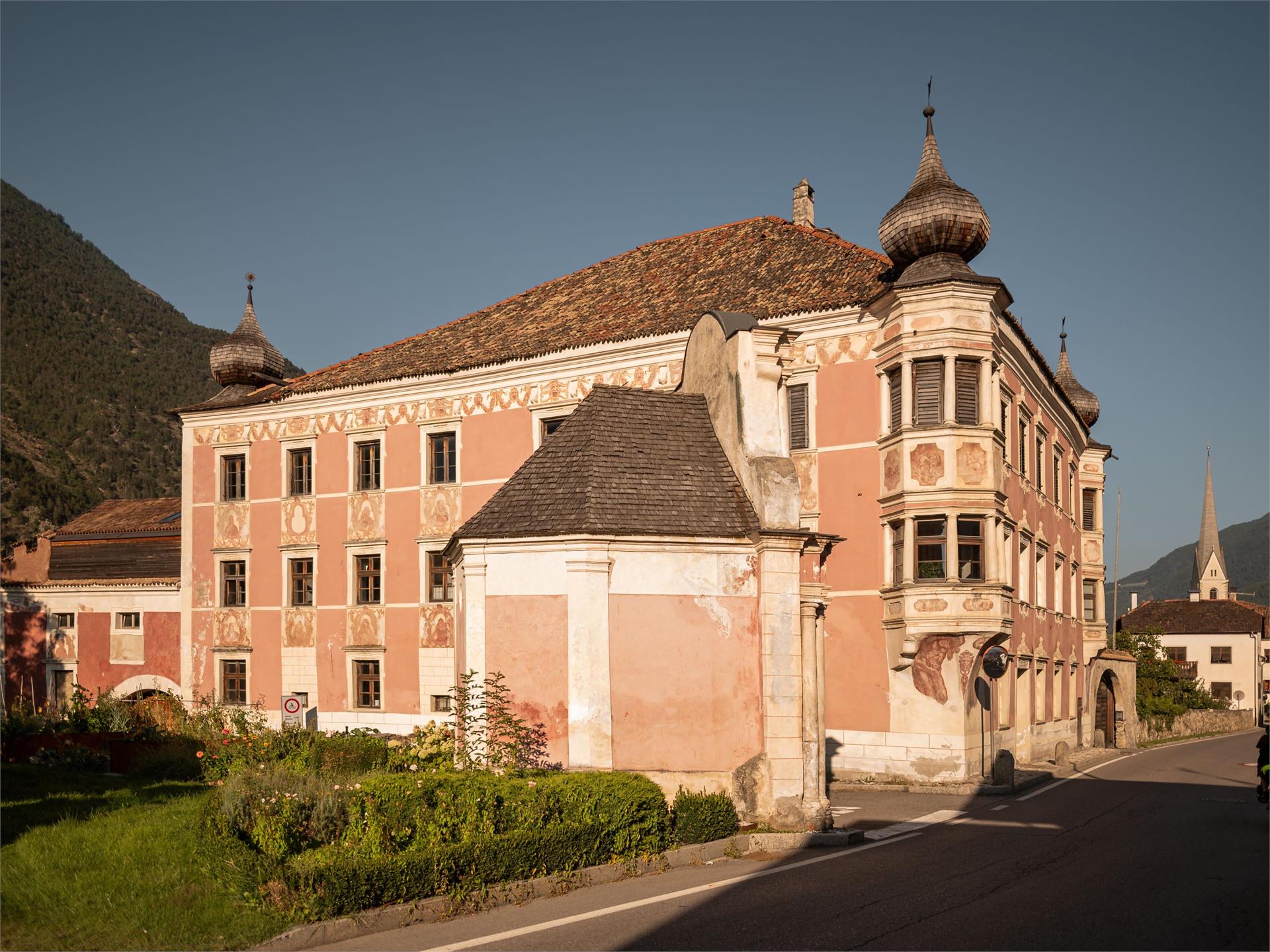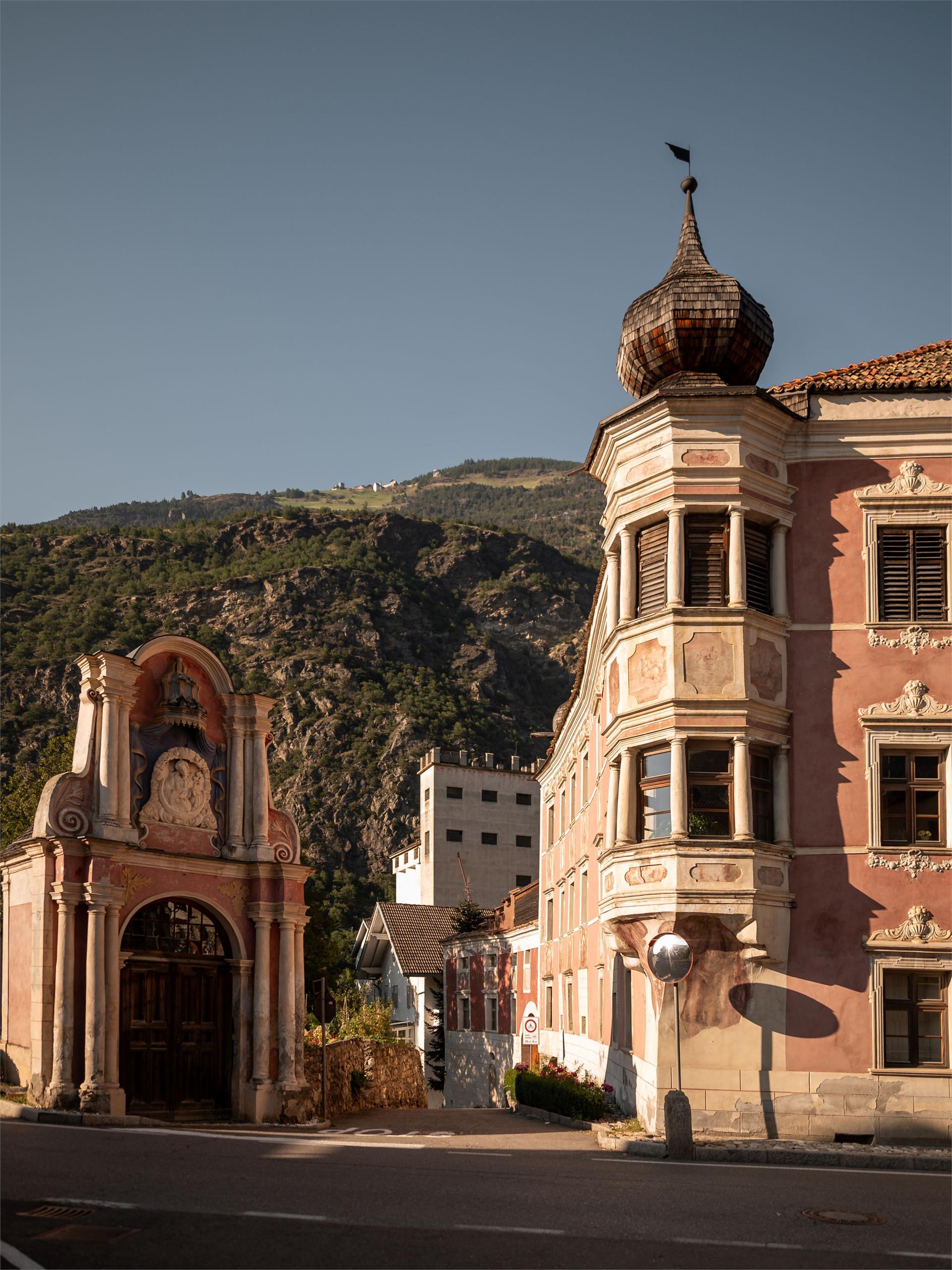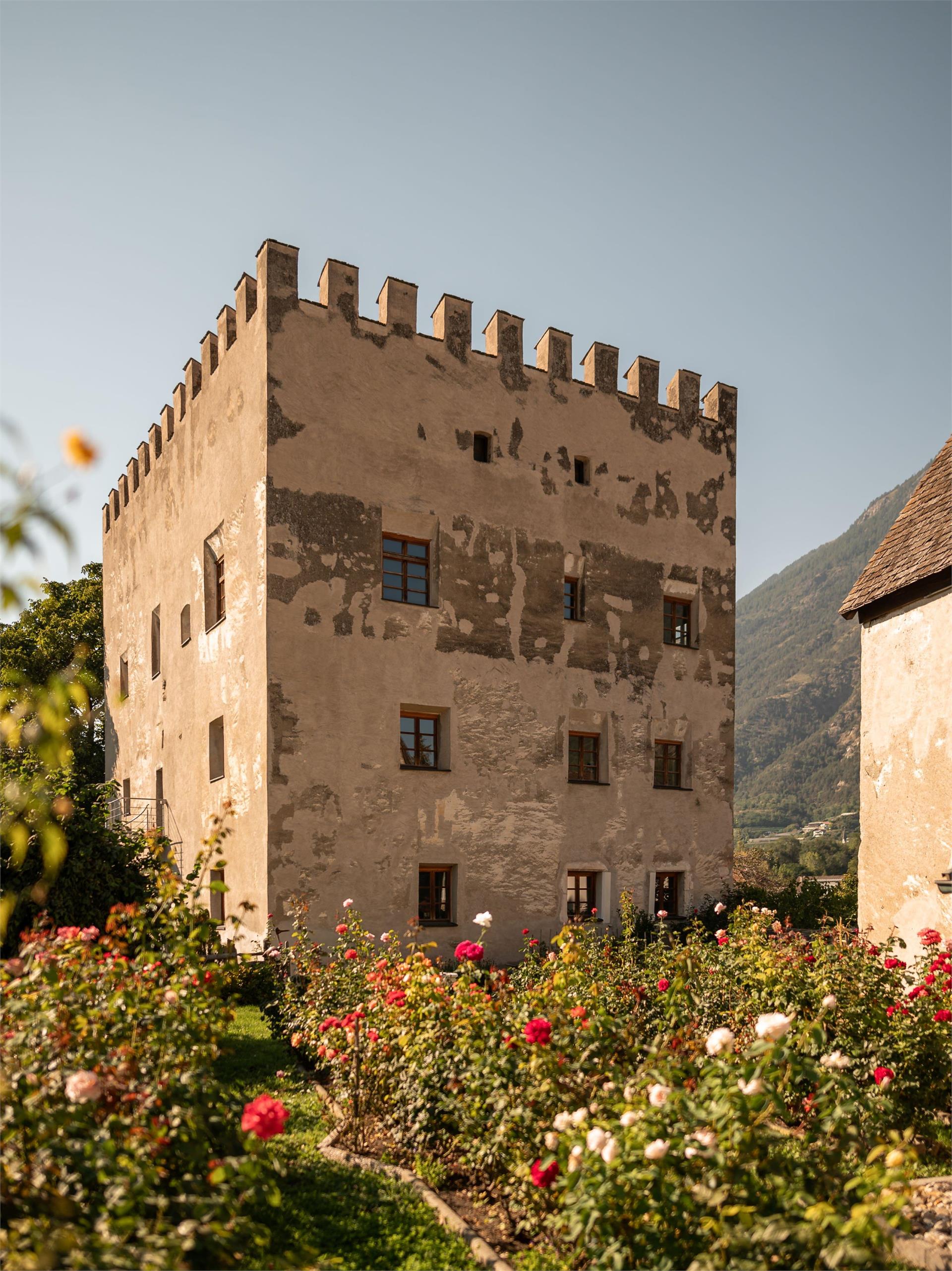Piazza della Libertà at Egna. The nucleus of the hamlet developed around the Piazza della Libertà/Freiheitsplatz, which, after being used for years as a parking area, was the star of an important restoration project. The ancient well was renovated and the “Sas del poz”, a calcareous monolith probably used in conjunction with ancient German judicial tradition, was reinstated.
Der Großteil befindet sich rund um Bozen. In dieser Gegend fällt dir bestimmt eine architektonische Eigenheit bei den Ansitzen auf, schlossähnliche Bauten aus der Neuzeit bestehend aus einem Herrenhaus und einem Gebäude für landwirtschaftlichen Zweck. Ihr sogenannter Überetscher Stil ist eine Kombination aus nordischer Gotik mit Türmchen und Elementen der italienischen Renaissance – und eben genau in der Gegend zwischen Bozen und Kaltern an der Weinstraße zu finden.


























































